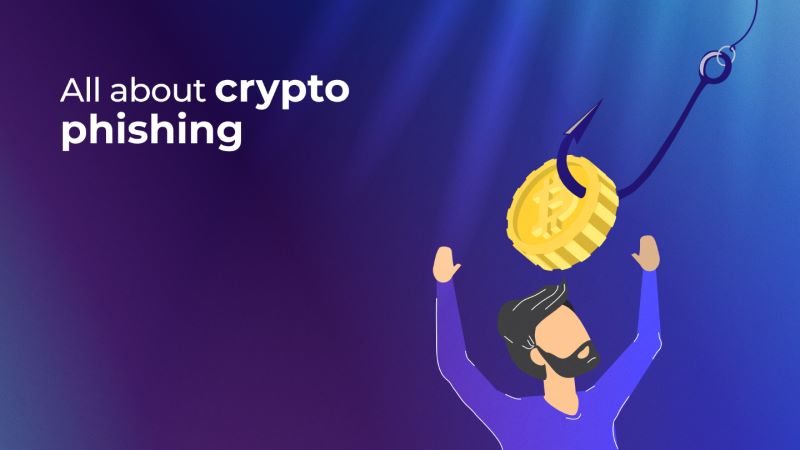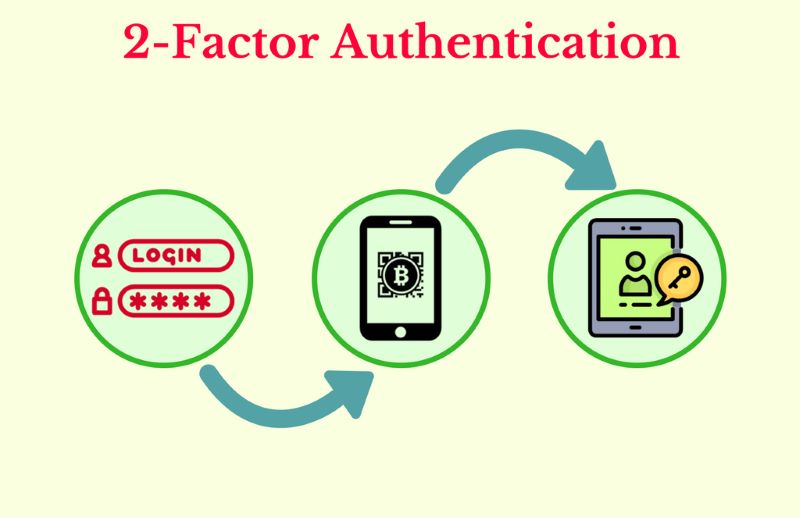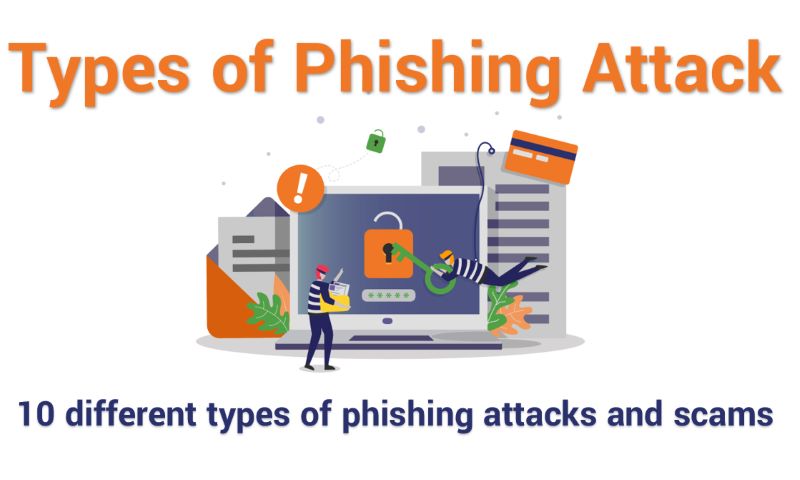Your digital coins might seem safe, snug in their digital wallets, but is this true? The answer shakes many to their core when they fall prey to a phishing attack in crypto. In this age where virtual currency sparkles with possibility, savvy scammers lurk, eager to bait the hook. But what joy is there in wealth you can lose with a click? I’ll unpack the slick tricks these cyber thieves use. This is crypto after all, where the bold get rich and the careful stay that way. So, buckle up, learn the drill, and let’s keep your digital fortune fortified against the scourge of scammers.
Understanding Phishing in the Cryptocurrency Realm
Defining Crypto Phishing
What’s crypto phishing? It’s a trick to steal your digital coins. Bad guys make fake sites or send fake emails. They look real but they’re not. They want you to share your personal info. This includes passwords to your crypto wallets. These scams happen often. They’re a big deal in the online coin world.
Crypto phishing is not hard to spot once you know what to look for. You might get an email that looks like it’s from a legit crypto exchange. But when you look closer, the email address is off by one letter. Or, you click a link, and it takes you to a site that seems real. But it’s a copy, made to trick you. It’s asking for your secret keys. Don’t fall for it!
Common Crypto Phishing Tactics
Now, let’s chat about how these crooks try to get you. There are lots of ways. Like email phishing. This is when a fake email asks you to click on a link or download something. These can be packed with nasty surprises. Like software that can steal your info.
Then we have SMS phishing. This is when you get a text message with a dodgy link. It looks urgent, asking you to fix an issue with your wallet. Don’t click! It’s a trap.
Next up, we find links in posts or messages. These phishing links might show up on social media or in a forum. They promise big money or free coins. Sound too good? It probably is. Always a red flag.
Phishing can look like someone you trust is asking for help. This is spear phishing. A message might say it’s from a buddy. It might ask for coins to help them out. But it’s not your friend. It’s a scammer.
We also watch out for fake apps. These apps look like real ones that help you trade or keep your coins safe. But if they ask for too much personal info, be careful. They might be phishing in disguise.
Last, let’s talk about websites. Imposter sites pop up all the time. They look like real crypto trading platforms. But don’t trust them too fast. They might be out to snag your info. Always double-check the web address. Make sure it’s the right one.
So, how do we stay safe from these scams? Be smart online. Know the signs of phishing. And never share your private keys or passwords. Use tools like two-factor authentication on your accounts. This adds an extra step to check it’s really you. And if something feels off, listen to that gut feeling. Better safe than sorry.
If you do spot a con, report it. Let the cryptocurrency community know. This way, you help others stay safe too. And you show those scammers we’re onto them. We can make the digital coin world a safer place together. Let’s keep our eyes peeled and guard our coins.
Recognizing and Avoiding Crypto Phishing Scams
Signs of Phishing in Cryptocurrency Transactions
Let’s talk about keeping your digital coins safe. Imagine you find an email saying, “Your crypto wallet needs an update.” Beware – it might be a trap! Crypto phishing is a way bad guys try to steal your coins. They trick you into handing over sensitive info, like your wallet’s private key.
Picture your digital coins as gold in a high-tech vault. Phishing is like finding a fake key that can’t open the vault but looks real. Crypto phishing does the same. It makes you think you’re safe when you’re not. Always check who sent the email. Look out for strange links too. If it feels off, it probably is.
Next, let’s dive into those scary links you should avoid. Phishing links in crypto might look like real crypto websites. But, they’re fake and dangerous. One click can put your coins at risk. To avoid this, don’t click on unexpected links. And if you need to visit a crypto site, type the web address yourself.
Now, one more important tip is about those worrisome messages. Phishing messages and crypto can be like wolves in sheep’s clothing. They might say you’ve won free coins. Or, they could scare you, claiming your wallet is at risk. These messages prey on your fears and dreams. Don’t let them fool you.
By recognizing these tricks, you can keep your coins away from thieves.
The Role of Social Engineering in Crypto Scams
Okay, onto our next big topic. Crypto scams love using social engineering. This is when someone tries to manipulate you. They pretend to be your friend or a trusted company. Their goal? To get their hands on your digital treasure.
Think of it this way: If someone you don’t know offers free coins, stay away. Real crypto companies won’t ask for private keys directly. And they won’t have you download sketchy apps. Always be wary of offers that sound too good to be true. Don’t share info unless you’re absolutely sure it’s safe.
Emails asking for a quick action are another red flag. They may be trying to rush you. When you’re rushed, you might miss the warning signs. Real businesses understand that security takes time. They won’t ask you to act fast without a good reason.
So, spear phishing in the crypto sector, what’s that about? It’s when scammers send messages aimed just at you. They might know your name or something else personal. This makes the message seem trustworthy. But don’t be fooled. Always double-check who’s really sending these messages.
To wrap this up, just remember that phishing is a sly fox. Always be on the lookout. Trust your gut. If something feels off, it might just be. You’ve got the power to protect your coins! Stay sharp, and you’ll outsmart those crypto con artists.
By staying informed about the signs of phishing and the tricks scammers use, you can boost your defenses against these digital dangers. With knowledge as your shield, your digital coins will be a lot safer.
Protecting Your Digital Assets from Phishing Attacks
Secure Practices for Crypto Wallets
Keeping crypto safe is a must. Bad actors are everywhere, trying to steal. So, I urge you: protect your digital money with solid habits. One slip might cost you. Start by treating your crypto wallet like precious cash. Only use wallets from trusted sources. Secure it with a strong, unique password. One that no one can guess.
Now, this next step is critical. Make backups of your wallet. Keep them in several places. If your device fails, you won’t lose your coins. Check your wallet’s address too before any transaction. Some scams use addresses that look almost right. But they’re traps. They lure you into sending money to a thief.
Avoid sharing your wallet details. Not on social media, not with friends. Phishing messages and crypto losses often start with shared info. It’s how crooks get their hooks in. They craft fake emails that seem like they’re from someone you trust. Always verify before acting on unexpected messages.
Next up, phishing links in crypto can sneak in anywhere. So don’t click on links in emails or messages. Even if they look okay. They may take you to imposter websites. From there, it’s easy for crooks to rob you. Be especially careful on your phone. SMS phishing is a growing threat.
Implementing Two-Factor Authentication for Crypto Safety
Our best tool against phishing is two-factor authentication. It’s your safety net. It adds an extra step to logging in. This makes it way harder for crooks to break in. To set it up, choose a method that’s not tied to your email. Why? Because if a thief hacks your email, they could bypass this security.
Use an app or a security key for two-factor. These options don’t rely on your potentially hacked email. And remember, you must check the setup properly. Do a trial run. Make sure it works before you need it. If you get locked out, it can be tough to regain access.
Now that two-factor is in place, keep alert for its warnings. If you get a login attempt notice you didn’t make, someone may be trying to get in. That’s when you should change your password right away. Not just for your wallet but for your email too. It’s like hearing an alarm. You wouldn’t ignore it, would you?
And finally, spread the word about safety. Phishing scams get less power when more people know about them. Keep up with cryptocurrency community fraud alerts. Learn the latest tricks scammers use. This knowledge is power. Power to protect your coins.
Phishing in crypto doesn’t have to be a monster lurking in the dark. With smart habits and good tools, you shine a light on those shadowy threats. Stay sharp, stay secure, and keep your digital treasure under lock and key.
Responding to Crypto Phishing Incidents
How to Report Crypto Phishing
Have you spotted a crypto scam? Act fast! You can fight back. Start by reporting the phishing attempt to the platform where it happened. Say you got a sketchy email. It’s from someone claiming to be from your crypto wallet service. Don’t click anything. Instead, report it to the actual service’s support team. Also, let your friends in the crypto community know about the fraud alert.
Next, you can alert authorities. In the U.S., report to the Cybersecurity & Infrastructure Security Agency (CISA). If money has been stolen, contact the police. Provide them with details. They’ll give you a report. This helps with further actions you may take.
Also, if you want to help others, share your experience. You can use social media or forums. Your story might save someone from a scam. Remember, you’re part of a community. Helping others keeps everyone safer.
Remediation Steps for Victims of Phishing Attacks
Fell for a phishing scam? It’s tough, but don’t panic. Here’s what to do.
First, secure your accounts. Change your passwords right away. If the scammers got your login info, this can stop them. Change passwords on other sites too, especially if they’re the same.
Next, check for odd activity. Look over your crypto transactions. See anything strange? Contact your crypto wallet provider. They can help track the fraud.
Then, protect your gear. Scan for viruses or malware. Scammers may have snuck harmful software onto your device.
Also, consider credit checks. If personal info was stolen, scammers could try to open accounts in your name. A credit check can catch signs of this.
Lastly, learn and adapt. Enhance your defense. Start using two-factor authentication for an extra safety layer. Familiarize yourself with common phishing tactics. Always stay cautious of unsolicited offers.
If your crypto was stolen, understand that getting it back can be tough. It’s one reason why being careful is crucial. However, by reporting and securing your accounts, you help limit the damage and may protect others by raising awareness.
We just covered crucial tips to keep your crypto safe. Let’s do a quick recap. First, we defined what crypto phishing is. We then explored the sneaky ways scammers try to trick you. Remember, staying alert is key to keeping your digital cash secure.
We also discussed how to spot these nasty scams. Social engineering—a fancy term for mind tricks—can make you an easy target, but not if you’re wise to their games. Always check twice before you click or share info online.
What’s more, you’ve got the tools to shield your crypto. Things like using safer wallet practices and adding extra security steps, like two-factor authentication, are your digital armor.
If you’re hit by a scam, don’t stress. There are ways to fight back: report the incident and follow the steps to fix things. Remember, in the crypto world, staying sharp and informed is your best defense. Here’s to making smart moves and keeping your crypto secure!
Q&A :
What exactly is a phishing attack in the context of cryptocurrency?
A phishing attack in cryptocurrency involves deceptive practices to trick individuals into revealing sensitive information, such as private keys or wallet passwords, by impersonating a trustworthy entity. These attacks often occur through fake websites, fraudulent emails, or social media messages, leading to unauthorized access to crypto assets.
How can someone recognize a crypto phishing attempt?
To recognize a crypto phishing attempt, be wary of unsolicited requests for your private information, double-check URLs for misspellings or odd characters, and always verify the authenticity of emails or messages purporting to be from official sources. Look for typical red flags such as urgency claims, promises of free money, or threats to account security.
What should you do if you suspect a phishing attempt related to your cryptocurrency?
If you suspect a phishing attempt, do not click on any links, do not provide any personal information, and immediately exit the communication. It’s also recommended to report the attempt to the legitimate entity being impersonated and to engage with the crypto community to spread awareness of the phishing scheme.
Are there specific tools or strategies to protect against phishing in the crypto space?
Yes, several strategies can help protect against phishing in the crypto space. Use hardware wallets for storing your digital assets, enable two-factor authentication for your accounts, regularly update your software and antivirus programs, and educate yourself on the latest phishing methods. Additionally, employ browser extensions or services designed to detect malicious websites.
Is phishing the same in traditional finance and cryptocurrency?
While the core concept of phishing is similar in traditional finance and cryptocurrency—tricking individuals into divulging confidential information—the implementation may vary due to the inherent differences in technologies. In the crypto realm, phishing can have immediate and irreversible consequences, as transactions cannot be undone and many platforms lack the governance structures present in traditional finance.





